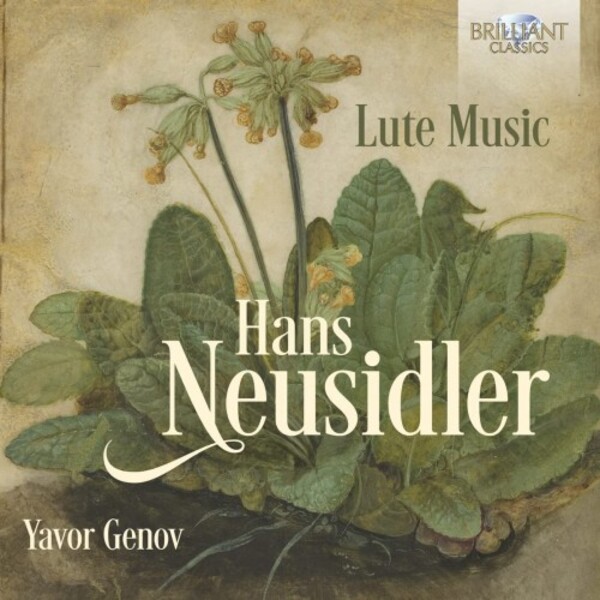
Neusidler - Lute Music
£9.45
In stock - available for despatch within 1 working day
Despatch Information
This despatch estimate is based on information from both our own stock and the UK supplier's stock.
If ordering multiple items, we will aim to send everything together so the longest despatch estimate will apply to the complete order.
If you would rather receive certain items more quickly, please place them on a separate order.
If any unexpected delays occur, we will keep you informed of progress via email and not allow other items on the order to be held up.
If you would prefer to receive everything together regardless of any delay, please let us know via email.
Pre-orders will be despatched as close as possible to the release date.
Label: Brilliant Classics
Cat No: 96456
Format: CD
Number of Discs: 1
Genre: Instrumental
Release Date: 8th July 2022
Contents
Works
Adieu mes amoursBenedetur
Benedictus
Der Beyrisch Bot - Hupff auff
Der recht Hoff Tanz - Hupff auff
Der recht Studenten Tantz - Hupff auff
Die not sucht weg
Ein Welisch tenzlein Clira Cassa
Ein ander Welscher Tanz - Hupff auff
Ein gut Preambel
Ein guter welscher Tanz
Ein gutter Venecianer Tanz - Hupff auÂff
Ein gut trium mit sconen Fugen
Ein seer guter organistischer Preambl
Es taget vor dem Holtze
Est is nit alles Golde - Hupff auff
Ich bin ein Fisher auff einem See
Ich het mit ein Annelein
In te domine speravi
La Bernardina
Lamora
Mille regretz
Plus multz regres
Preambel
Preamel
So wunsch ich jr ein gute Nacht
Tus biens
Vostrea Jamais
Wascha mesa - Hupff auff
Artists
Yavor Genov (lute)Works
Adieu mes amoursBenedetur
Benedictus
Der Beyrisch Bot - Hupff auff
Der recht Hoff Tanz - Hupff auff
Der recht Studenten Tantz - Hupff auff
Die not sucht weg
Ein Welisch tenzlein Clira Cassa
Ein ander Welscher Tanz - Hupff auff
Ein gut Preambel
Ein guter welscher Tanz
Ein gutter Venecianer Tanz - Hupff auÂff
Ein gut trium mit sconen Fugen
Ein seer guter organistischer Preambl
Es taget vor dem Holtze
Est is nit alles Golde - Hupff auff
Ich bin ein Fisher auff einem See
Ich het mit ein Annelein
In te domine speravi
La Bernardina
Lamora
Mille regretz
Plus multz regres
Preambel
Preamel
So wunsch ich jr ein gute Nacht
Tus biens
Vostrea Jamais
Wascha mesa - Hupff auff
Artists
Yavor Genov (lute)About
Neusidler divided this first lute book of 1536 into two parts: for beginners and advanced players. Yavor Genov has selected from the latter pages of the book for this album, which has among its most singular features a treasury of dazzling intabulations of chansons by famed composers of the day such as Josquin, Ghiselin and Isaac. Besides his technical skill at transforming vocal music into lute pieces Neusidler demonstrates notable ingenuity in his free-form preambels: brief, original, abstract compositions that move fluidly between canonic imitation, imitative sequences and homages to the older faux-bourdon style of Dufay and other late-medieval masters. The third principal stylistic component of the book is the dance form. Pieces designated as Tan[t]z/Tenzlein are probably based on vocal tunes or on a ground, and often move from double metre to a second section in triple metre (called Hupff auff).
Error on this page? Let us know here
Need more information on this product? Click here